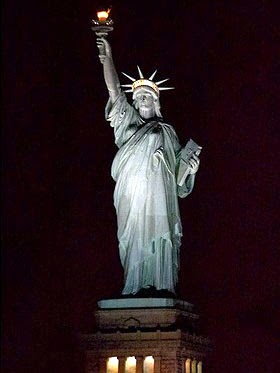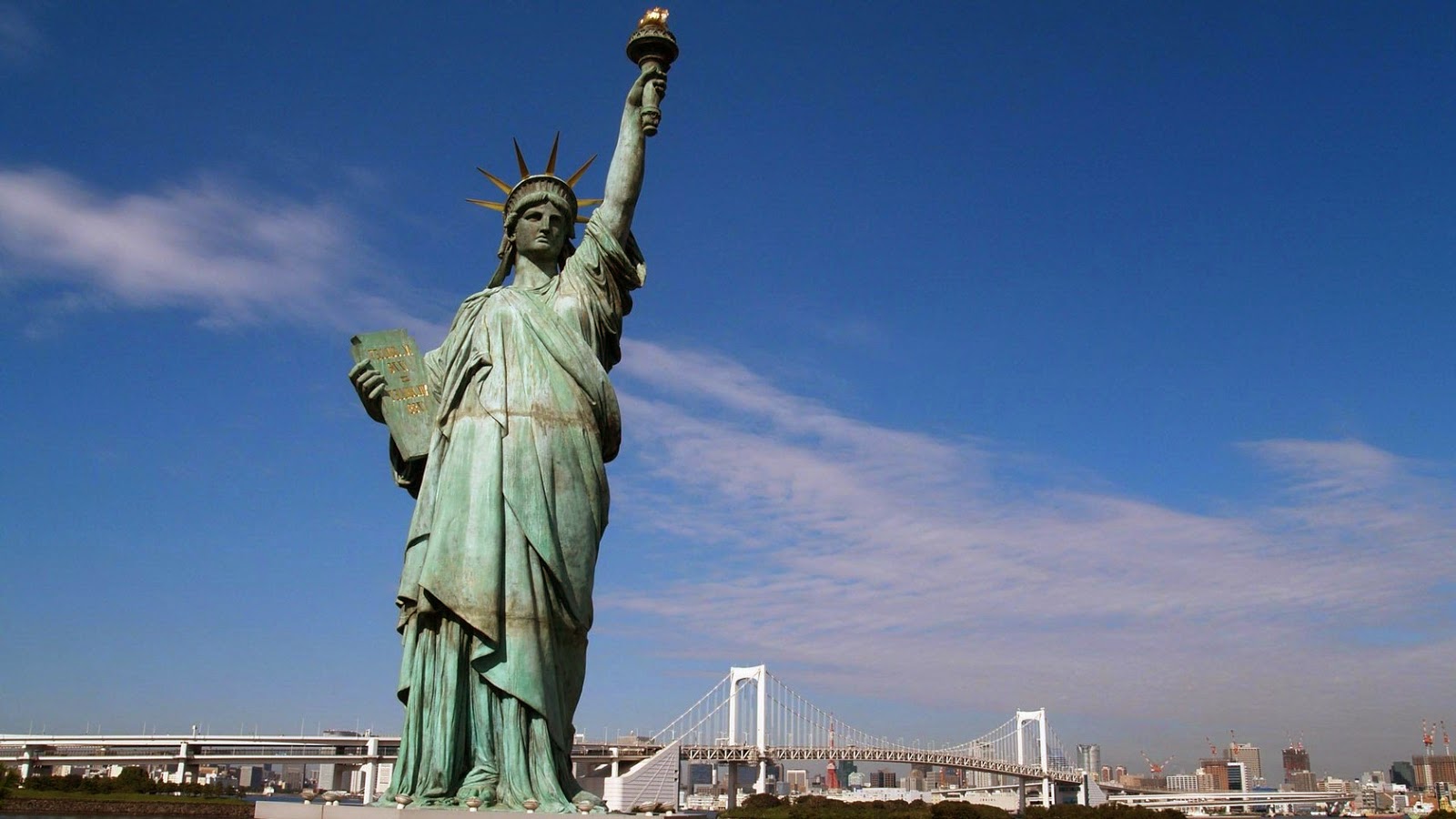The Statue of Liberty Enlightening the World was a gift of
friendship from the people of France to the people of the United States and is
a universal symbol of freedom and democracy. The Statue of Liberty was
dedicated on October 28, 1886, designated as a National Monument in 1924 and
restored for her centennial on July 4, 1986.
History of The Statue of Liberty
The Statue of Liberty National Monument officially
celebrated her 100th birthday on October 28, 1986. The people of France gave
the Statue to the people of the United States over one hundred years ago in
recognition of the friendship established during the American Revolution. Over
the years, the Statue of Liberty's symbolism has grown to include freedom and
democracy as well as this international friendship.
Sculptor Frederic Auguste Bartholdi was commissioned to
design a sculpture with the year 1876 in mind for completion, to commemorate
the centennial of the American Declaration of Independence. The Statue was a
joint effort between America and France and it was agreed upon that the
American people were to build the pedestal, and the French people were
responsible for the Statue and its assembly here in the United States. However,
lack of funds was a problem on both sides of the Atlantic Ocean. In France,
public fees, various forms of entertainment, and a lottery were among the
methods used to raise funds. In the United States, benefit theatrical events,
art exhibitions, auctions and prize fights assisted in providing needed funds.
Meanwhile in France, Bartholdi required the assistance of an
engineer to address structural issues associated with designing such a colossal
copper sculpture. Alexandre Gustave Eiffel (designer of the Eiffel Tower) was
commissioned to design the massive iron pylon and secondary skeletal framework
which allows the Statue's copper skin to move independently yet stand upright.
Back in America, fund raising for the pedestal was going particularly slowly,
so Joseph Pulitzer (noted for the Pulitzer Prize) opened up the editorial pages
of his newspaper, "The World" to support the fund raising effort.
Pulitzer used his newspaper to criticize both the rich who had failed to
finance the pedestal construction and the middle class who were content to rely
upon the wealthy to provide the funds. Pulitzer's campaign of harsh criticism
was successful in motivating the people of America to donate.
Financing for the pedestal was completed in August 1885, and
pedestal construction was finished in April of 1886. The Statue was completed
in France in July, 1884 and arrived in New York Harbor in June of 1885 on board
the French frigate "Isere" which transported the Statue of Liberty
from France to the United States. In transit, the Statue was reduced to 350
individual pieces and packed in 214 crates. The Statue was re-assembled on her
new pedestal in four months time. On October 28th 1886, the dedication of the
Statue of Liberty took place in front of thousands of spectators. She was a
centennial gift ten years late.
The story of the Statue of Liberty and her island has been
one of change. The Statue was placed upon a granite pedestal inside the
courtyard of the star-shaped walls of Fort Wood (which had been completed for
the War of 1812.) The United States Lighthouse Board had responsibility for the
operation of the Statue of Liberty until 1901. After 1901, the care and
operation of the Statue was placed under the War Department. A Presidential
Proclamation declared Fort Wood (and the Statue of Liberty within it) a
National Monument on October 15th, 1924 and the monument's boundary was set at
the outer edge of Fort Wood. In 1933, the care and administration of the
National Monument was transferred to the National Park Service. On September 7,
1937, jurisdiction was enlarged to encompass all of Bedloe's Island and in
1956, the island's name was changed to Liberty Island. On May 11, 1965, Ellis
Island was also transferred to the National Park Service and became part of the
Statue of Liberty National Monument. In May of 1982, President Ronald Reagan
appointed Lee Iacocca to head up a private sector effort to restore the Statue
of Liberty. Fundraising began for the $87 million restoration under a
public/private partnership between the National Park Service and The Statue of
Liberty-Ellis Island Foundation, Inc., to date the most successful
public-private partnership in American history. In 1984, at the start of the
Statue's restoration, the United Nations designated the Statue of Liberty as a
World Heritage Site. On July 5, 1986 the newly restored Statue re-opened to the
public during Liberty Weekend, which celebrated her centennial.
Fun Facts About The Statue of Liberty
If you have ever visited the
Statue of Liberty in person, you already know she's an imposing figure, but
consider the following fun facts:
- Official dedication ceremonies held on Thursday, October 28, 1886
- Total overall height from the base of the pedestal foundation to the tip of the torch is 305 feet, 6 inches
- Height of the Statue from her heel to the top of her head is 111 feet, 6 inches
- The face on the Statue of Liberty measures more than 8 feet tall
- There are 154 steps from the pedestal to the head of the Statue of Liberty
- A tablet held in her left hand measures 23' 7" tall and 13' 7" wide inscribed with the date JULY IV MDCCLXXVI (July 4, 1776)
- The Statue has a 35-foot waistline
- There are seven rays on her crown, one for each of the seven continents, each measuring up to 9 feet in length and weighing as much as 150 pounds
- Total weight of the Statue of Liberty is 225 tons (or 450,000 pounds)
- At the feet of the Statue lie broken shackles of oppression and tyranny
- During the restoration completed in 1986, the new torch was carefully covered with thin sheets of 24k gold
- The exterior copper covering of the Statue of Liberty is 3/32 of an inch thick (less than the thickness of two pennies) and the light green color (called a patina) is the result of natural weathering of the copper

.jpg)

No comments:
Post a Comment